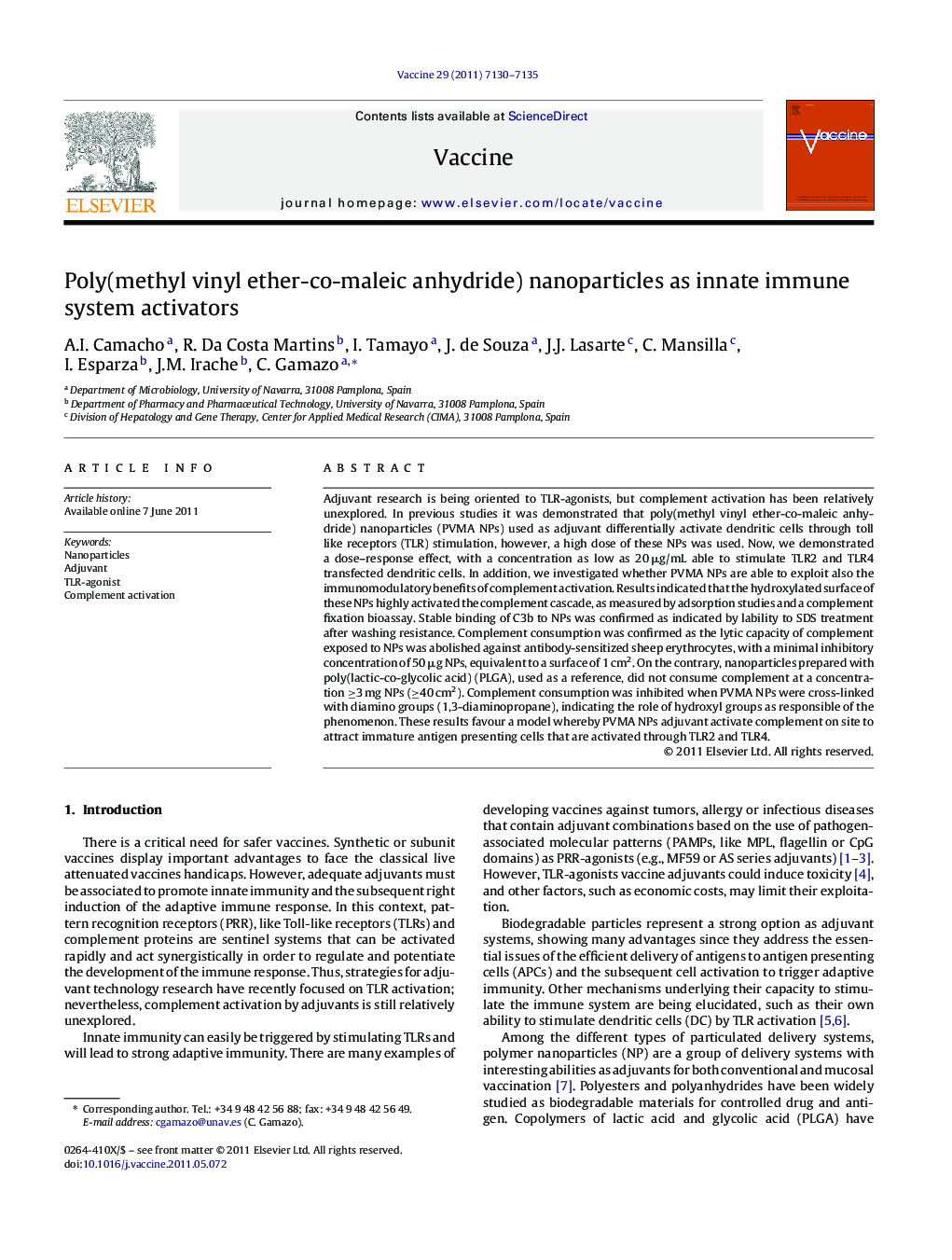| کد مقاله | کد نشریه | سال انتشار | مقاله انگلیسی | نسخه تمام متن |
|---|---|---|---|---|
| 10969422 | 1102957 | 2011 | 6 صفحه PDF | دانلود رایگان |
عنوان انگلیسی مقاله ISI
Poly(methyl vinyl ether-co-maleic anhydride) nanoparticles as innate immune system activators
دانلود مقاله + سفارش ترجمه
دانلود مقاله ISI انگلیسی
رایگان برای ایرانیان
موضوعات مرتبط
علوم زیستی و بیوفناوری
ایمنی شناسی و میکروب شناسی
ایمونولوژی
پیش نمایش صفحه اول مقاله

چکیده انگلیسی
Adjuvant research is being oriented to TLR-agonists, but complement activation has been relatively unexplored. In previous studies it was demonstrated that poly(methyl vinyl ether-co-maleic anhydride) nanoparticles (PVMA NPs) used as adjuvant differentially activate dendritic cells through toll like receptors (TLR) stimulation, however, a high dose of these NPs was used. Now, we demonstrated a dose-response effect, with a concentration as low as 20 μg/mL able to stimulate TLR2 and TLR4 transfected dendritic cells. In addition, we investigated whether PVMA NPs are able to exploit also the immunomodulatory benefits of complement activation. Results indicated that the hydroxylated surface of these NPs highly activated the complement cascade, as measured by adsorption studies and a complement fixation bioassay. Stable binding of C3b to NPs was confirmed as indicated by lability to SDS treatment after washing resistance. Complement consumption was confirmed as the lytic capacity of complement exposed to NPs was abolished against antibody-sensitized sheep erythrocytes, with a minimal inhibitory concentration of 50 μg NPs, equivalent to a surface of 1 cm2. On the contrary, nanoparticles prepared with poly(lactic-co-glycolic acid) (PLGA), used as a reference, did not consume complement at a concentration â¥3 mg NPs (â¥40 cm2). Complement consumption was inhibited when PVMA NPs were cross-linked with diamino groups (1,3-diaminopropane), indicating the role of hydroxyl groups as responsible of the phenomenon. These results favour a model whereby PVMA NPs adjuvant activate complement on site to attract immature antigen presenting cells that are activated through TLR2 and TLR4.
ناشر
Database: Elsevier - ScienceDirect (ساینس دایرکت)
Journal: Vaccine - Volume 29, Issue 41, 22 September 2011, Pages 7130-7135
Journal: Vaccine - Volume 29, Issue 41, 22 September 2011, Pages 7130-7135
نویسندگان
A.I. Camacho, R. Da Costa Martins, I. Tamayo, J. de Souza, J.J. Lasarte, C. Mansilla, I. Esparza, J.M. Irache, C. Gamazo,